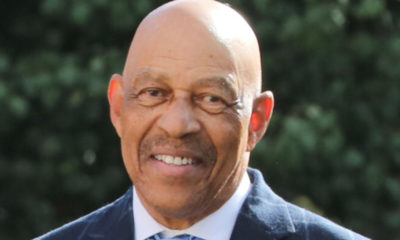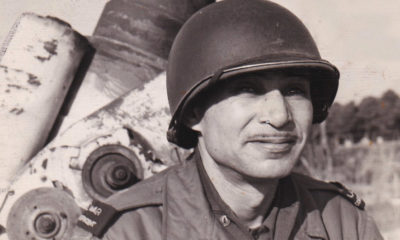National
Little Rock Officials Weigh Renaming Confederate Boulevard


Small Confederate flags are displayed on a shelf at Arkansas Flag and Banner in Little Rock, Ark., Tuesday, June 23, 2015. (AP Photo/Danny Johnston)
CLAUDIA LAUER, Associated Press
LITTLE ROCK, Ark. (AP) — Though only a short stretch of Little Rock’s Confederate Boulevard remains, to some it is a glaring reminder of the city’s checkered racial past.
City officials are expected to consider a petition Thursday to rename the boulevard’s last few blocks after one of the area’s first black property owners. Coincidentally, the planning commission’s vote comes 58 years to the day that 1,200 troops arrived to escort nine black students to their first day of class during the integration of Central High School.
While many debates over Southern symbols are decades old, others have emerged in the months since nine black church members were shot and killed this summer at a historic black church in Charleston, South Carolina. The white man charged in the killings, Dylann Roof, posted photos before the shooting of himself with a Confederate flag and symbols associated with white supremacy.
Since then, South Carolina removed the Confederate flag from its State House and Memphis, Tennessee, voted to remove from a public park a statue of Confederate Gen. Nathan Bedford Forrest, an early Ku Klux Klan leader.
Anika Whitfield helped gather the necessary 10 signatures from the 20 property owners along Confederate Boulevard to have the petition considered by the Planning Commission.
“Something that seems so benign can be very malignant in our community,” Whitfield said. “We have to see that, yes, some things are historical because they happened, but they’re not beneficial for us and our future … and becoming fortified.”
The Little Rock Board of Directors, the city’s elected council, eventually will have the final say after the commission makes its recommendation.
Confederate Boulevard, Springer Boulevard and Barber Street combine to make a roughly 2.5-mile long thoroughfare in a predominantly black section of southeast Little Rock that runs past the Little Rock National Cemetery. Petitioners are asking officials to rename the remaining four blocks as a continuation of Springer, the name chosen during the 1970s for the majority of the boulevard to honor the Rev. Horace Springer, one of the area’s first black property owners, who moved to Arkansas from Alabama in the 1920s.
At least one property owner is against the change while others refused to sign the petition.
The H.F. Scruggs baking supply company has listed a Confederate Boulevard address since it opened in 1941. Owner David Scruggs said the name Confederate Boulevard has historic value he isn’t ready to see erased. Although because of the racial connotations of arguing against the change, Scruggs said he “has no plans to speak out at any city meeting about it.”
“I said when the first name change happened that I didn’t have a problem renaming part of the street after the Springers,” he said. “But the name is historical. It did not have anything to do with the Civil War. It was about the nursing home for Confederate veterans. I fail to see anything political about it.”
Even high-ranking city officials have mixed feelings about the importance of the four-block street.
“If the Planning Commission moves forward with a recommendation to change it, I would support it,” Little Rock Mayor Mark Stodola said. “There are (Confederate) statues and monuments all over the South. I just don’t know where you draw the line.”
The State Highway and Transportation Department erased Confederate Boulevard from interstate highway signs a few weeks before the 2004 opening of Bill Clinton’s presidential library at the request of city leaders. Without the change, the first highway sign that dignitaries arriving for festivities would have seen after leaving the Little Rock airport would have been for Confederate Boulevard.
Years after Clinton tried to chip away at a racial divide in the state and nation, Little Rock has been trying to chip away at an enduring legacy, too, as it has moved from a majority-white city to one where no racial or ethnic group is a majority. Photographs of black teenagers flanked by rifle-carrying soldiers as crowds of contorted white faces shouted were beamed around the world in 1957. The images endure.
Professor John Kirk, director of the Institute on Race and Ethnicity at the University of Arkansas at Little Rock, said the city is one of many in the region that have tried to come out from under the umbrella of racial division.
“The South’s needs and demographics are changing as the population changes,” he said. “The South more and more feels that (racial) history is less part of the identity they want to project to the rest of the nation.”
Copyright 2015 The Associated Press. All rights reserved. This material may not be published, broadcast, rewritten or redistributed.













































